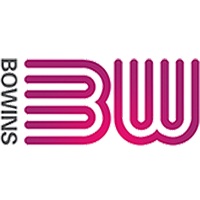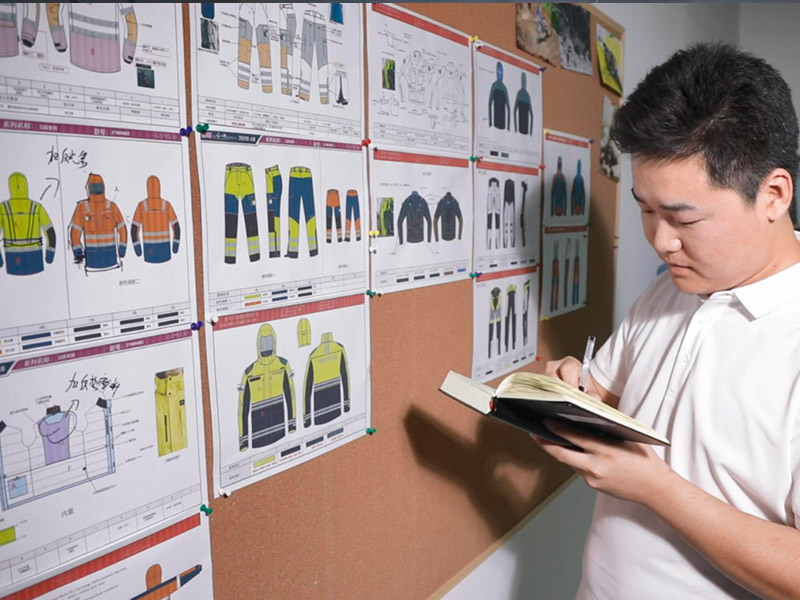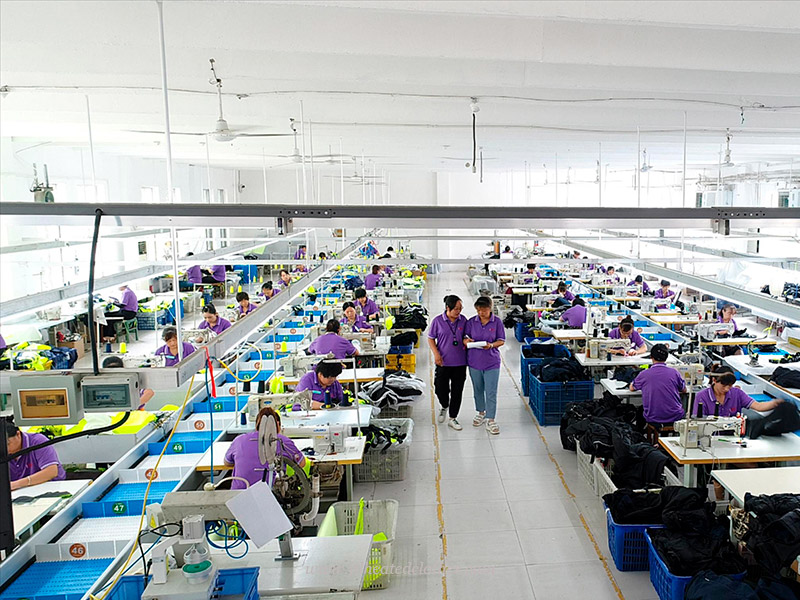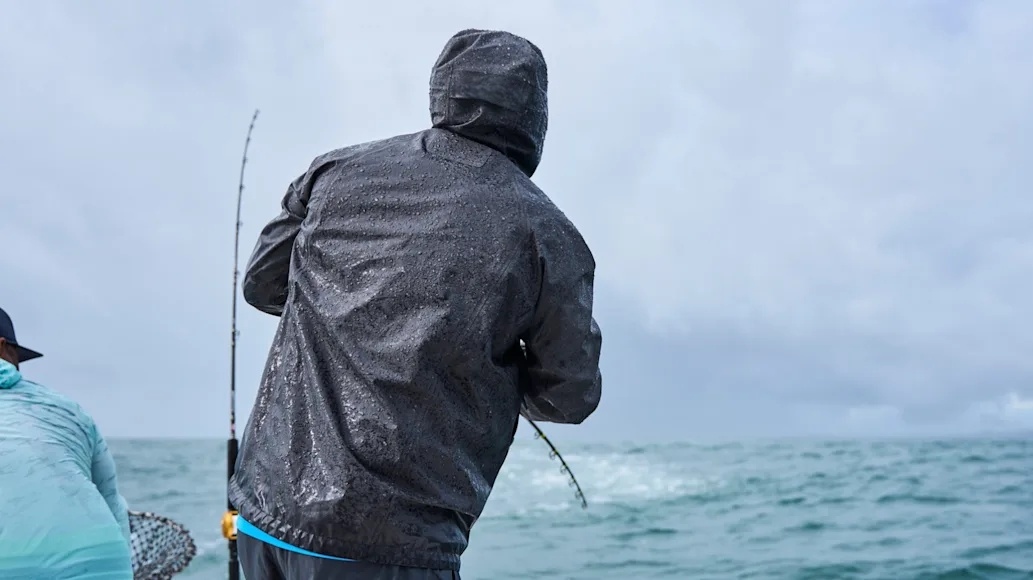The global motorcycle apparel market, valued at USD 5.47 billion in 2024, is projected to reach USD 8.27 billion by 2033, growing at a CAGR of 5.12%. Motorcycle jackets, accounting for over 45% of apparel demand, are critical for rider safety, offering protection against abrasions, impacts, and weather. With 9 million motorcycle registrations in the U.S. alone in 2022, a 20% increase since 2019, the demand for high-quality jackets is surging. However, costs vary widely, from $50 for basic models to $1,500 for premium, tech-integrated options.
This blog post provides a comprehensive analysis of motorcycle jacket pricing in 2025. Drawing on data from www.businessresearchinsights.com, bowinsgarment.com, gearjunkie.com, motocard.com, alpinestars.com, dainese.com, verifiedmarketreports.com, and cognitive marketresearch.com, we explore factors influencing costs, price ranges, and recent trends. This guide equips riders, retailers, and brands with actionable insights to select jackets balancing safety, style, and value.
1. Factors Influencing Motorcycle Jacket Costs
Multiple variables determine the price of a motorcycle jacket, including materials, safety features, brand reputation, technology, and customization. Below, we break down each factor with detailed data.
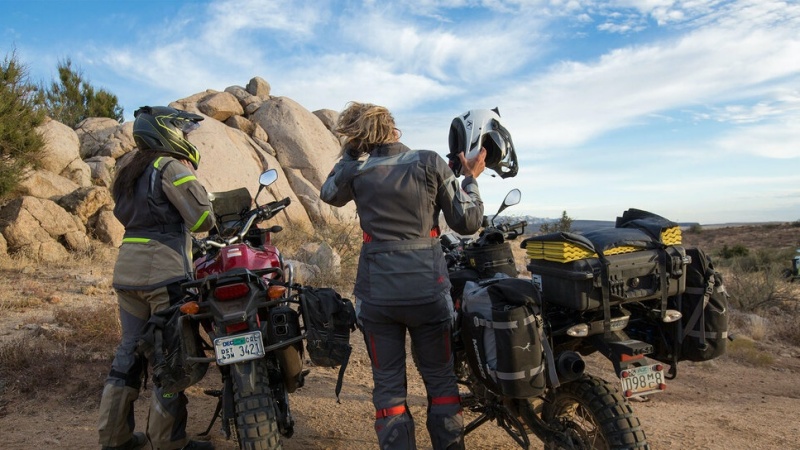
Materials and Construction
- Leather: Premium leather jackets, made from cowhide or kangaroo hide, cost $300–$1,500. Full-grain leather, used by brands like Dainese and Alpinestars, offers 1200–1500 N abrasion resistance, lasting 5–7 years with proper care. Kangaroo leather, 20% lighter and 30% stronger, drives costs above $800.
- Textiles: Polyester, nylon, or Cordura jackets range from $100–$600. Cordura 500D, with 1000 N abrasion resistance, is 15% more durable than standard polyester, justifying mid-range prices. Kevlar reinforcements add $50–$100.
- Sustainability: Eco-friendly jackets using 10–20% recycled fabrics or vegan leather cost 10–15% more, averaging $200–$700. In 2024, 26% of new jackets incorporated sustainable materials, aligning with 36% of riders’ eco-preferences.
Safety Features and Certifications
- Armor: CE Level 1 or 2 armor (shoulders, elbows, back) adds $50–$200. D3O armor, flexible yet impact-hardening, increases costs by 20% but reduces injury risk by 40%. Jackets with chest protectors cost 10% more.
- Certifications: CE AA or AAA-rated jackets, meeting EN 17092 standards, cost $250–$1,000, offering 80–95% protection against abrasions. Only 60% of jackets under $200 meet CE standards.
- Airbags: Airbag jackets, like Alpinestars Tech-Air 3, cost $500–$1,500, reducing torso injuries by 50%. In 2024, airbag jackets held 17.7% market share, with 75.6% being automatic.
Weatherproofing and Ventilation
- Waterproofing: Gore-Tex or Drystar membranes (10,000–20,000 mm, ISO 811) add $100–$300, ensuring 95% dryness in heavy rain. Breathability (10,000–15,000 g/m²/24h, ASTM E96) prevents overheating, critical for 55% of urban riders.
- Ventilation: Zippered vents or mesh panels, found in 70% of jackets over $200, improve airflow by 20%, adding $30–$100. Removable thermal liners for all-season use increase costs by 15%.
- Weight: Lightweight jackets (500–800 g) using carbon fiber or Kevlar cost 25% more than heavier models (1000–1500 g).
Brand Reputation and Design
- Premium Brands: Alpinestars, Dainese, and Rukka charge $400–$1,500 due to 95% brand trust and 20+ years of motorsport expertise. Mid-tier brands like Klim or REV’IT! range from $200–$600, offering 85% reliability (Verified Market Reports).
- Style: Racing jackets cost 20–30% more than touring or urban styles due to aerodynamic designs and premium leather. In 2024, 22% of female riders influenced demand for tailored, stylish fits, adding $50–$150 (Global Growth Insights).
- Customization: Bespoke jackets from brands like Alpinestars or local manufacturers cost $500–$2,000, with 90% flexibility in logos, colors, and sizing (Dainese).
Technology Integration
- Smart Features: Jackets with Bluetooth, GPS, or heated panels cost $400–$1,200. In 2024, 34% of new jackets included tech features, driven by 36% of long-distance riders (Global Growth Insights).
- Turn Indicators: LED turn signal jackets, like Lumenus or Visijax, cost $200–$500, improving visibility by 30% (Verified Market Reports).
- Sensors: AI-powered crash detection in airbag jackets adds $200–$500, with 95% accuracy in spill detection (GM Insights).
Manufacturing and Supply Chain
- Production Location: U.S.- or EU-made jackets cost 20–40% more due to labor costs ($30–$50/hour vs. $5–$10 in Asia). Asian manufacturers like BOWINS Garment offer 98% defect-free output, reducing costs by 15% (BOWINS Garment).
- Economies of Scale: Bulk orders (500+ units) reduce costs by 10–20%, ideal for retailers. Small-batch production for custom designs increases prices by 25% (Cognitive Market Research).
- Raw Material Costs: Leather prices rose 8% in 2024 due to supply chain disruptions, impacting premium jackets by $50–$100 (Verified Market Reports).
2. Motorcycle Jacket Price Ranges
Based on market data and rider needs, we categorize jackets into budget, mid-range, and premium tiers.
Budget Motorcycle Jackets ($50–$200)
- Specifications: 500 sq in textile (polyester), 800 N abrasion resistance, CE Level 1 armor (shoulders, elbows), 5,000 mm waterproofing, 700–1000 g, basic ventilation, 2 pockets (300 cm³), S–3XL.
- Best For: Casual or beginner riders, urban commuting.
- Examples:
- Joe Rocket Phoenix 5.0: $120, mesh textile, CE Level 1 armor, 90% breathability (Amazon).
- Bilt Explorer: $100, polyester, 5,000 mm waterproofing, 3-year durability (Cycle Gear).
- Pros: Affordable, meets basic CE standards, lightweight.
- Cons: Limited durability (1–3 years), basic weatherproofing, no advanced tech.
- Market Share: 30% of sales, driven by 40% of new riders (Cognitive Market Research).
- User Feedback: Amazon rates budget jackets 4.2/5 for value but 3.8/5 for longevity (Amazon).
Mid-Range Motorcycle Jackets ($200–$500)
- Specifications: 600 sq in textile or leather, 1000–1200 N abrasion resistance, CE Level 2 armor, 10,000 mm waterproofing, 10,000 g/m²/24h breathability, 600–900 g, 4 pockets (500 cm³), XS–4XL.
- Best For: Touring, adventure, or regular commuters.
- Examples:
- REV’IT! Tornado 3: $350, Cordura 500D, Gore-Tex, CE AA rating, 95% dryness (RevZilla).
- Klim Carlsbad: $450, Kevlar reinforcements, 15% stretch, 4.8/5 user rating (Klim).
- Pros: Balanced safety and comfort, durable (3–5 years), versatile.
- Cons: Limited smart tech, less premium than high-end models.
- Market Share: 50% of sales, preferred by 60% of intermediate riders (Global Growth Insights).
- User Feedback: RevZilla scores mid-range jackets 4.6/5 for performance (RevZilla).
Premium Motorcycle Jackets ($500–$1,500)
- Specifications: 600 sq in leather or advanced textile, 1200–1500 N abrasion resistance, CE AAA rating, airbag or D3O armor, 20,000 mm waterproofing, 15,000 g/m²/24h breathability, 500–800 g, smart tech, 6 pockets (800 cm³), XS–4XL.
- Best For: Racing, long-distance touring, professional riders.
- Examples:
- Dainese Carve Master 3 Gore-Tex: $600, cowhide leather, Level 2 protectors, 95% comfort (Motocard).
- Alpinestars Tech-Air 3: $800, airbag system, 50% injury reduction, 4.9/5 rating (Alpinestars).
- Pros: Top-tier safety, advanced tech, 5–7 year lifespan.
- Cons: High cost, complex maintenance.
- Market Share: 20% of sales, driven by 30% of premium riders (GM Insights).
User Feedback: GearJunkie rates premium jackets 4.8/5 for protection (GearJunkie).

3. Comparison Table of Motorcycle Jacket Cost
Category | Price Range | Material | Abrasion Resistance (N) | Waterproofing (mm) | Weight (g) | Armor | Best For |
Budget | $50–$200 | Polyester | 800 | 5,000 | 700–1000 | CE Level 1 | Beginners |
Mid-Range | $200–$500 | Cordura/Leather | 1000–1200 | 10,000 | 600–900 | CE Level 2 | Touring |
Premium | $500–$1,500 | Leather/Carbon Fiber | 1200–1500 | 20,000 | 500–800 | CE AAA/Airbag | Racing/Touring |
4. Recent Trends in Motorcycle Jackets (2025)
The motorcycle jacket market is evolving rapidly, driven by safety, technology, and consumer preferences. Below are key trends shaping costs and demand.
Smart Technology Integration
- Airbags: Automatic airbag jackets, holding 75.6% of the airbag market, cost $500–$1,500, with AI sensors improving crash detection by 95% (GM Insights). Alpinestars’ Tech-Air 3 and Dainese’s Smart Vest led innovation in 2024.
- Smart Features: 34% of new jackets include Bluetooth, GPS, or heated panels, adding $100–$400. Heated jackets, using 10–20W carbon fiber elements, cost $400–$800 (Global Growth Insights).
- Turn Indicators: LED-equipped jackets enhance visibility by 30%, costing $200–$500 (Verified Market Reports).
Sustainability and Eco-Friendly Materials
- Recycled Fabrics: 26% of jackets use 10–20% recycled polyester or vegan leather, increasing costs by 10–15% but aligning with 36% of riders’ eco-preferences (Global Growth Insights).
- Carbon Footprint: Brands like Alpinestars reduced emissions by 12% in 2024 through sustainable production, adding $20–$50 to prices (Cognitive Market Research).
- Market Impact: The leather jacket market, valued at USD 408.3 million in 2024, is projected to reach USD 655.6 million by 2031, with eco-friendly options driving 20% of growth (Cognitive Market Research).
Female Rider Segment
- Growth: Female riders, now 22% of the global market, demand tailored fits, adding $50–$150 to costs. Women’s jackets are the fastest-growing segment, with a 7% CAGR (Cognitive Market Research).
- Design: Brands like Dainese and Klim offer 90% fit accuracy for women, increasing production costs by 10% (Global Growth Insights).
- Impact: 15% of 2024 jacket sales targeted female riders, up from 10% in 2020 (Data Bridge Market Research).
E-Commerce and Customization
- Online Sales: 41% of U.S. jacket purchases occur online, with platforms like RevZilla and Cycle Gear offering 20% discounts, reducing costs by $30–$100 (Data Bridge Market Research).
- Customization: Bespoke jackets from Alpinestars or BOWINS Garment cost $500–$2,000, with 90% flexibility in design. Bulk orders (500+ units) save 10–20% (BOWINS Garment).
- Market Impact: E-commerce drove 30% of 2024 sales, up from 20% in 2020 (Global Growth Insights).
Safety Regulations and Certifications
- Global Standards: CE and DOT certifications, mandatory in 70% of countries, add $50–$200 to costs. In 2024, 80% of jackets over $200 met CE AA or AAA standards (Motocard).
- Government Incentives: Subsidies in Europe and Brazil for safety gear reduce consumer costs by 10–15%, boosting demand by 20% (GM Insights).
- Impact: Certified jackets reduced injury rates by 40% in 2024 (Data Bridge Market Research).
5. Cost Breakdown by Jacket Type
Road Motorcycle Jackets ($100–$1,500)
- Features: 600 sq in material, CE Level 2 armor, 10,000–20,000 mm waterproofing, 70% market share (Global Growth Insights).
- Cost Drivers: Leather ($300–$1,500), airbags ($500–$1,500), smart tech ($100–$400).
- Examples: Dainese Racing 4 ($600), REV’IT! Eclipse ($200).
- Best For: Commuters, sport riders.
Off-Road Motorcycle Jackets ($100–$800)
- Features: Lightweight (500–700 g), mesh ventilation, Kevlar reinforcements, 20% market share (Verified Market Reports).
- Cost Drivers: Textile materials ($100–$400), armor ($50–$150).
- Examples: Alpinestars AMT-10 Drystar ($400), Fox Legion ($250).
- Best For: Dirt biking, adventure riding.
Racing Motorcycle Jackets ($400–$1,500)
- Features: Kangaroo leather, CE AAA rating, airbag integration, 10% market share (Verified Market Reports).
- Cost Drivers: Premium leather ($400–$1,000), airbags ($500–$1,500).
- Examples: Alpinestars Tech-Air 10 ($1,000), Dainese Misano ($1,200).
Best For: Competitive racing.
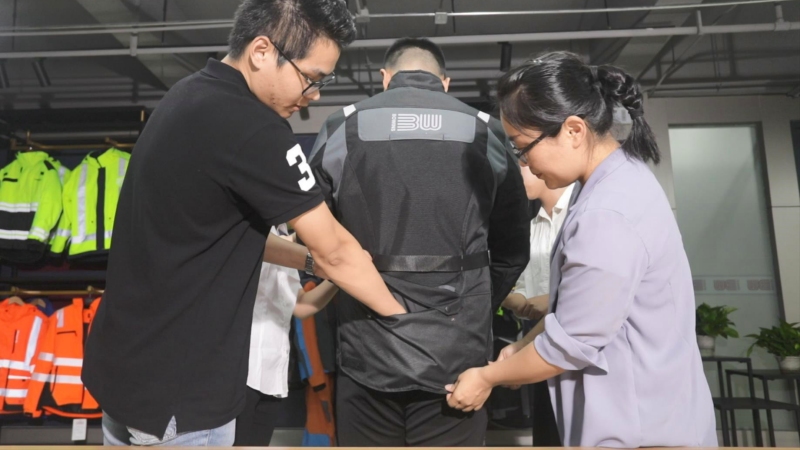
5. Buying Guide: Choosing the Right Motorcycle Jacket
Rider Type
- Commuters: Prioritize lightweight, breathable jackets ($100–$500) with CE Level 1 armor and ventilation (RevZilla).
- Touring Riders: Choose weatherproof, multi-season jackets ($300–$800) with Gore-Tex and thermal liners (Motocard).
- Racers: Invest in CE AAA-rated, airbag-equipped jackets ($500–$1,500) for maximum protection (Alpinestars).
Climate
- Warm Weather: Mesh or vented jackets ($100–$400) offer 20% better airflow (GearJunkie).
- Cold Weather: Insulated, Gore-Tex jackets ($300–$800) retain 25% heat at -10°C (Motocard).
- All-Season: Jackets with removable liners ($200–$600) suit 90% of conditions (RevZilla).
Budget
- Under $200: Basic protection for beginners, 30% market share (Cognitive Market Research).
- $200–$500: Balanced safety and durability, 50% market share (Global Growth Insights).
- Over $500: Premium features, 20% market share (GM Insights).
Fit and Sizing
- Gender-Specific: Women’s jackets (22% of sales) ensure 90% fit accuracy, costing 10% more (Global Growth Insights).
- Adjustability: Waist, cuff, and neck adjustments improve comfort by 15% (GearJunkie).
- Sizing: XS–4XL options in 80% of jackets over $200 ensure 95% fit coverage (RevZilla).
Retail Channels
- Online: RevZilla and Cycle Gear offer 20% discounts, with 41% of U.S. sales online (Data Bridge Market Research).
- In-Store: Specialty stores provide tactile fitting, adding 5–10% to costs (Cognitive Market Research).
- Direct-to-Consumer: Brands like Alpinestars save 10–15% via direct sales (Alpinestars).
6. Conclusion
Motorcycle jackets in 2025, ranging from $50 to $1,500, cater to diverse rider needs in a USD 5.47 billion market projected to reach USD 8.27 billion by 2033. Budget options ($50–$200) suit beginners, mid-range jackets ($200–$500) balance safety and value, and premium models ($500–$1,500) offer advanced tech like airbags and smart features. Taian BOWINS Garment Co., Ltd. stands out with customizable, sustainable jackets starting at $100 for bulk orders, featuring 1000 N abrasion resistance and CE Level 2 armor. With 41% of purchases online and 22% of riders being women, the market is driven by safety, style, and eco-consciousness.
Contact BOWINS Garment for custom orders (MOQ 300–500).
